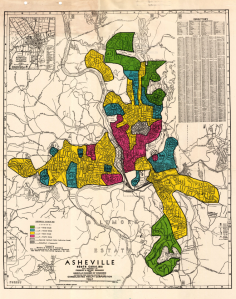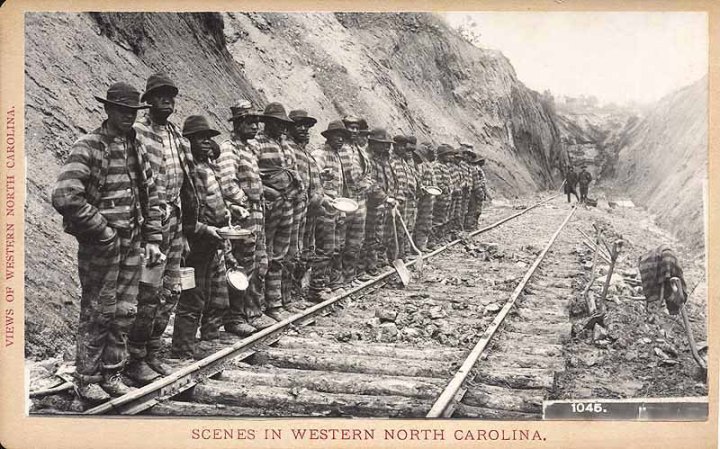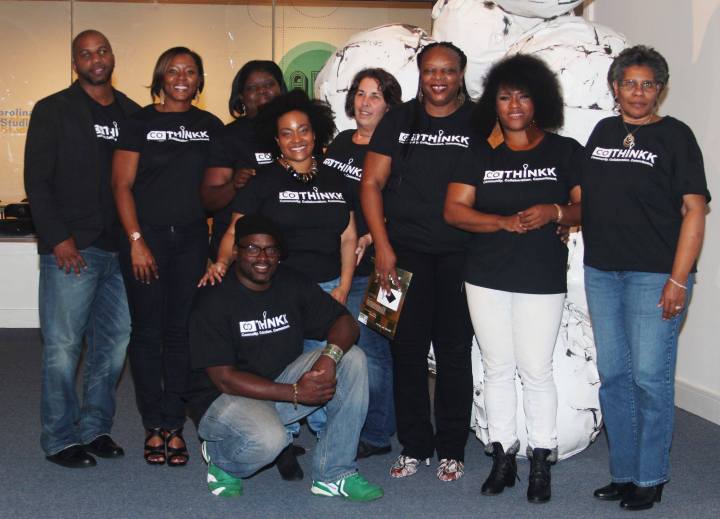The Game is Rigged
The devastating cumulative impact of centuries of systemic racism on blacks in this country cannot be underestimated. It is way past time to face the fact that whites have been benefiting from a game that is rigged in our favor. In his seminal Atlantic Monthly essay, The Case for Reparations, Ta-Nehisi Coates reminds us, “Two hundred fifty years of slavery. Ninety years of Jim Crow. Sixty years of separate but equal. Thirty-five years of racist housing policy. Until we reckon with our compounding moral debts, America will never be whole.”
In Asheville, our moral debts are real. From slavery through Jim Crow and segregation, the exploitation and marginalization of blacks in ou r city has been thorough. When we learn about the redlining that occurred here, and the subsequent leverage of the consequences of redlining to virtually destroy black neighborhoods during “urban renewal,” it is undeniable that our racist policies have prevented blacks from building wealth here.
r city has been thorough. When we learn about the redlining that occurred here, and the subsequent leverage of the consequences of redlining to virtually destroy black neighborhoods during “urban renewal,” it is undeniable that our racist policies have prevented blacks from building wealth here.
“What you see in Asheville is stunning: the urban renewal projects coincide precisely with the redlined areas from the 1930s…There’s absolutely no room for speculation here: it’s one policy seeping into another. Those neighborhoods that were singled out under redlining — and labelled as areas that should not be reinvested in — come out in the 1960s and ’70s policies selected as candidates for putting highways through them or for eminent domain” (Red lines, The Asheville Blade).
We must not ignore the fact that blacks have contributed mightily to the prospering city we live in today. The Buncombe Turnpike, which changed the future of Asheville, was built by enslaved people. The labor of enslaved people was crucial to developing our tourism industry, where they worked as waiters, maids, cooks, porters, grooms and trail guides. People are often shocked when I point out that many of our streets, such as Charlotte, Merrimon, Woodfin and Patton, were built by enslaved people and named for their enslavers. What is the effect of knowing the names of the oppressors, while being unaware of the people who actually built much of our city? I would posit that this is one of the reasons we suffer from extreme racial disparities today. How can a group that is unseen be effectively engaged in the greater body politic?
After slavery, many black men were thrown in jail for minor infractions or made up charges and then were “enlisted for such projects as the [Western North Carolina Railroad] Swannanoa Tunnel in 1879. Nearly 200 convicts died in local cave-ins and mudslides and from disease and prosecution of escapees” (Asheville Citizen-Times). Once again, the construction of the railroad was critical to the growth of Asheville, not mention leading to great wealth for men like Zebulon Vance.

The fact that historically black neighborhoods in Asheville (East End, Shiloh, Burton Street, Southside, Hill Street) had periods of time when they were full of flourishing businesses, shows the great resiliency of those communities despite living under an unfair system. However, the devastation of poorly handled desegregation and urban renewal has brought us to a point where today only 1.7% of businesses in Asheville are black-owned (State of Black Asheville).
When we look at any indicator – health, education, criminal justice, economics – we see extreme racial disparities. “The Pew Research Center estimates that white households are worth roughly 20 times as much as black households, and that whereas only 15 percent of whites have zero or negative wealth, more than a third of African Americans do. Effectively, the black family in America is working without a safety net” (Ta-Nehisi Coates). In Asheville, the median white household income is $42,333, while the median black household income is $30,000 (2010 United States Census).
So my question is, what actions can we take to change our course?
The Reasonableness of the Redistribution of Wealth
I feel strongly that we must be bold when addressing racial disparities. I’ve heard too many white people bemoan the fact that the black population in Asheville is suffering and dwindling, without investing in significant measures to address the issues.
“Reparations—by which I mean the full acceptance of our collective biography and its consequences—is the price we must pay to see ourselves squarely. The recovering alcoholic may well have to live with his illness for the rest of his life. But at least he is not living a drunken lie. Reparations beckons us to reject the intoxication of hubris and see America as it is—the work of fallible humans” (Ta-Nehisi Coates).
Coates’ “intoxication” metaphor seems particularly apt in a town that subsidizes the beer industry while black neighborhoods are being gentrified out of existence. We must sober up and do what is right.
Invest in Black-led Organizations and Enterprises
While solutions to repairing the wreckage of systemic racism are complicated, I can suggest one crucial action, which is in investing significant money in black-led organizations and enterprises.
Asheville has an extensive network of nonprofit and governmental agencies, many with missions to address disparities. However, over the past eight or so years that UNC Asheville professor Dr. Dwight Mullen has been teaching his State of Black Asheville course, which tracks statistics related to racial disparities, those disparities have consistently gotten worse. Why?
Clearly, the strategies we have been using to address this issues are insufficient and/or ineffective. We can change our course by dedicating more resources to supporting leaders who have been directly limited and harmed by systemic racism.
The Voices Project, led by Leroy Barber, points out that 97% of all charitable giving goes to organizations led by white leaders, while only 3% of charitable giving goes to organizations led by people of color. People of color account for over half of those the poverty in the U.S. The reality is that white-led nonprofits receive the majority of funding to serve mostly people of color. This creates a dynamic that I believe prevents real change. Barber highlights “leaders of color who are making a difference in their communities. They are bringing hope, building movements, and serving in under-resourced communities. At the same time, they themselves are under-resourced.”
With this awareness, we have a responsibility to look at how funding is flowing in Asheville.
Justice Heals
“What I’m talking about is more than recompense for past injustices—more than a handout, a payoff, hush money, or a reluctant bribe. What I’m talking about is a national reckoning that would lead to spiritual renewal” (Ta-Nehisi Coates).
When we sincerely move towards an inclusive, equitable Asheville, we are changing historical patterns that truly harm everyone. Join me in envisioning a place where everyone’s lives are richer. The healing that can happen will lift us all.

Members of CoThinkk. Photo by GO DIVA!
NOTE: I wrote another post with some suggestions of projects to support, click here to read it.

Devastating and important read. Get involved – it’s up to us to end systemic racism! Thanks for writing this.
LikeLike
Ami, this is an outstanding column. I would like to use some of this in an article I am doing for the temple, if I may. Will paraphrase it but point out info reCoThink Judy
LikeLike
Of course you may! Let me know if you need any additional sources related to the points I made.
LikeLike
1.7%. Mind blown.
LikeLike
Sad truth. Source: http://stateofblackasheville.org/economics/
LikeLike
Great insight into how black-led non-profits need more $ support for reaching out to members of the black community. I love the concrete idea of supporting black leaders and black organizations who are reaching black communities.
LikeLike
Yes, that will be my next post! In the meantime, check out these folks: http://ashevilleaction.com/resources/
LikeLike
Excellent and well written. Thank you for all the work you do to bring truth to light.
LikeLiked by 1 person
Thank you.
LikeLike
Hi, great article but the link to black-led businesses just goes to some Facebook event for a bluegrass jam. I’d like to know how to support more local businesses. Thanks.
LikeLike
Thanks for catching that error! Here is the correct link: http://ashevilleaction.com/2015/12/08/awareness-action/
LikeLike